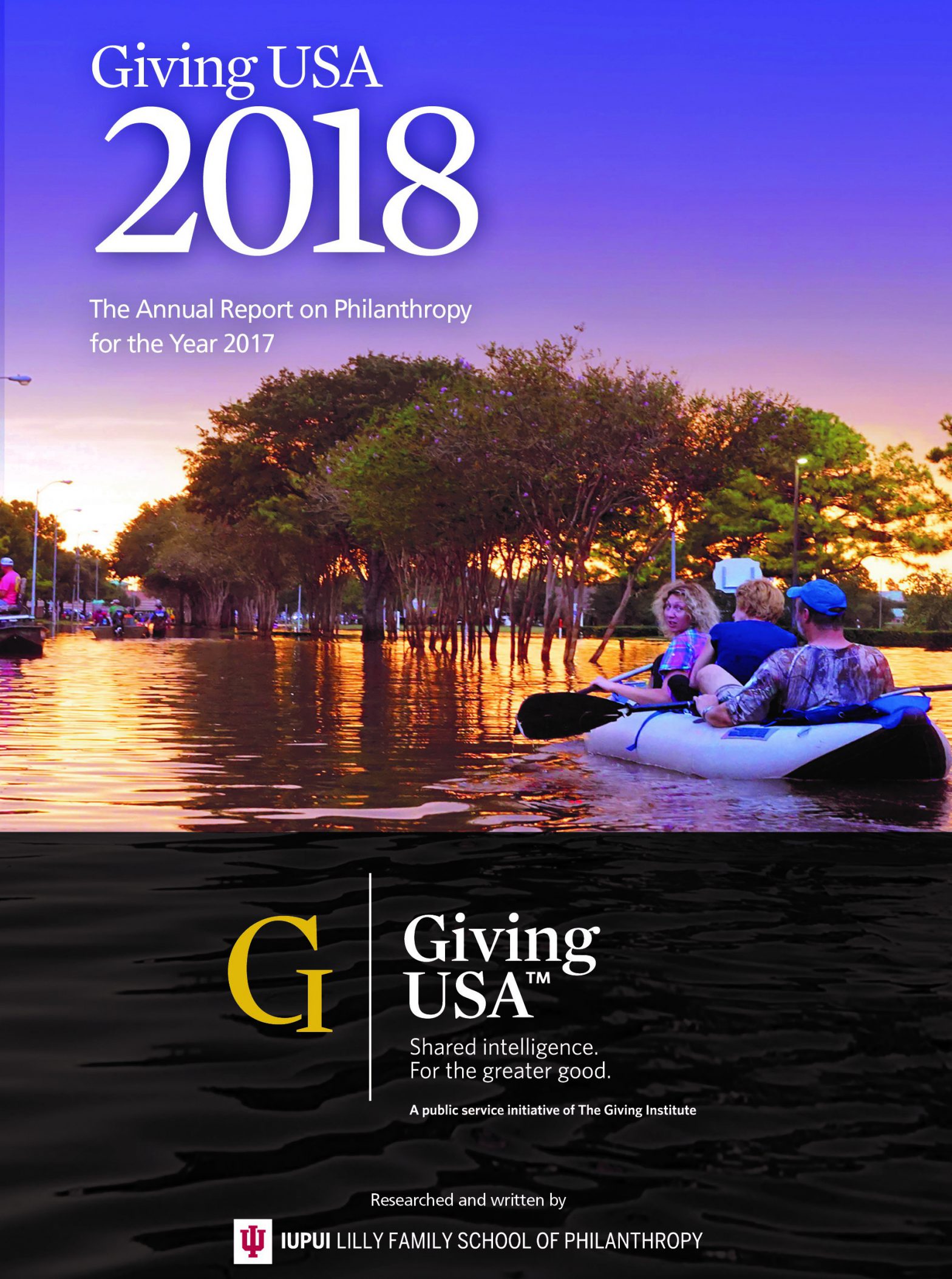
Our rapidly changing world and its impact on U.S. philanthropy are, without doubt, encapsulated in the Giving USA 2018 report. Disaster response, response to changing politics and policies, worries for our environment and for those in poverty is clear in the numbers and summary analyses across the breadth of donor and recipient categories. What strikes me in looking through the report for insights to offer our clients are apparent concerns as to how to truly achieve impact and motivate others to be more philanthropic, and at the same time, possible answers to those very challenges.
The Who and Where of Giving Today
Of the record $400+ billion in donations in 2017, 70% of donors were individuals, giving $286.65 billion, up 5% over last year. Family foundations gave $31.68 billion, compared with total corporate giving of $20.77 billion. Fewer households gave in 2017, with lingering impact of the Great Recession, declining religiosity, and demographic shifts cited as likely reasons. However, those who could give more – older donors and wealthier individuals – did so, and many significant donors are not only new but younger, as is evident by the Chronicle of Philanthropy’s Philanthropic 50. Many of these donors recognize the issue of increasing wealth disparity and target their contributions in ways that aid those at the other end of the divide, focusing on education and public-society benefit, as well as human services and health issues.
The How of Giving: Shifting Responses
Changes in tax law and disaster response certainly pushed many to act quickly at year’s end and increased one-time donations to aid organizations. International giving dropped, with more of the funds responding to challenges here at home. Younger donors, and women in particular, used tactics like crowdfunding or point-of-sale events to draw others to causes important to them. While friends’ gifts do expand awareness and increase coffers, commitments are often for single events or one-time donations. When prompted by this more responsive approach to giving, donor retention year-to-year averages only 45.5%, which increases the time and resources directed to fundraising and repeats the cycle.
And a third trend we are watching is that of the so-called “mega-donation,” especially those to larger foundations. It will be interesting to explore whether donors prefer these because they feel they are adding their voices to time-tested and established strategies, and doing so purely due to that merit, or in part because their own giving is still more reactive and less strategic, and the need to do more quickly is driving these gifts. Over time, these donors may become more confident as they learn more about strategic philanthropy, and become more open to a proactive approach that opens the doors to smaller nonprofits and other changemakers.
The What… and What’s Next to Give with Confidence
Looking beyond the sharp rise of 15.5% in giving to grantmaking foundations, for a total of $45.89 billion, the three subsectors experiencing the largest percent increases in donations were: arts, culture, and humanities, which rose 8.7% to $19.51 billion; public-society benefit organizations, which rose 7.8% to $29.59 billion; and environmental and animal organizations, which increased 7.2% to $11.83 billion. Giving to religion rose only 3%, but remained the largest subsector at $127.37 billion. Giving to education rose 6.2% to $58.9 billion, giving to human services increased 5.1% to $50.06 billion, and giving to health is estimated to have increased by 7.3% to $38.27 billion.
As donors consider their support over the course of this year, in light of whether their 2018 work was largely reactive or proactive, we at TPI hope to see donors taking a fresh look at strategic philanthropy. Strategic donors understand their own unique and verifiable impact on the world. Boomer women, for example, who tend to give more directly based on deeper experience, tend to be more satisfied with their philanthropy.
Individuals and family foundations that undergo strategic planning have more focused definition to their giving, and more resilient – and yet flexible – guidelines. They have determined how to balance being responsive to critical needs with being proactive in an effort to generate long-term change. That balance, in turn, enables them to seek out the right destinations that engage them and increase their confidence further in turn. What better way to move forward and play a role in the shifts and opportunities that will be cited in next year’s Giving USA?


